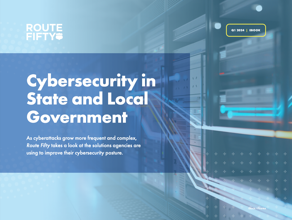Connecting state and local government leaders
As California’s governor tackles a state-wide housing crisis, he’s looking to cities like San Jose to invest in a smorgasbord of potential solutions.
For the second time running, Zillow crowned San Jose, California, with an auspicious title this year: It’s the hottest housing market in the country. When Zillow released stats ranking the median income of buyers and renters in cities around the country, San Jose topped the list again. Look around, though, and few are celebrating.
In one apartment, Shavell Crawford lives with her fiancé and four roommates. She works days as an executive assistant, studies nights as a law student, and often thinks about leaving the state before her wedding. “Do we want to live in California and have our first house be between $800,000 and $1.5 million?” she asks. “When we say our ‘I Do’s’ are we going to come back to roommates?” Behind another door is Nuemi Guzman, who wakes up at 4:30 a.m. every morning and gets home at 7:30 p.m., after a two-and-a-half-hour commute to work in Los Banos. Her parents spend more time with her kids than she does. She dreams of Arizona.
Meanwhile, in a $1,500-a-month studio, two cats live alone while their owner resides elsewhere and stops in to feed them daily. “Peak Silicon Valley,” the Mercury News called the plush set-up. But the apartment is actually a steal: Average rent for a studio in the city is closer to $2,000.
This dynamic has made San Jose an emblem of California and the Bay Area’s widening inequality. But at a time when dozens of cities around the state are facing similarly dire housing crises, San Jose has also tried to position itself as the laboratory for working with the state’s new governor to make the problem better. The stand both Governor Gavin Newsom and San Jose Mayor Sam Liccardo are taking: Neither city nor state can solve this alone.
Shortly after starting his governorship in January, Newsom announced a dramatic housing “Marshall Plan,” saying he’d aim to build 3.5 million new homes across the state by the end of his term. To do it, the state will earmark $1.75 billion of new funding in California’s 2019-2020 budget towards affordable housing projects, Newsom said. That investment may just scratch the surface of housing action needed, however—and the plan’s success will rely heavily on regional collaboration and participation from city leaders.
To incentivize that broad local buy-in, the state will offer “carrots and sticks,” Newsom has said: If cities don't meet their housing production goals, for example, their transportation funding will be withheld. It’s a contentious strategy that some advocates worry could reinforce inequality within and between California regions, even as it hinders community NIMBYism. But it’s one that Liccardo has endorsed.
“God’s not making any more land,” Liccardo told CityLab. “So we need everybody to be all hands on deck.”
In his corner of the Bay Area, Liccardo has already been working towards an ambitious goal for San Jose, set before Newsom’s intervention. By 2022, he wants to build 10,000 affordable units. And so, even as the city faces ongoing political resistance, the city has become a petri dish of housing pilots.
There are classic tactics like monetary investments in affordable housing, and job creation. There are experimental ideas like developing the world’s largest planned co-living building; a community built out of refurbished shipping containers for the homeless; and a temporary tiny homes pilot. There are pro-development ideas, like cutting taxes to speed up and cheapen construction, and reducing fees to build low-income housing.
And there’s an ambitious political strategy undergirding it: a 34-point work plan the San Jose council has been following since last year, the first of its kind used to navigate its housing crisis. Among the priorities are establishing minimum height and density requirements, slashing parking requirements, and exploring the idea of a land trust.
Despite all this, San Jose’s efforts are also emblematic of another Bay Area challenge. However aggressive, the city’s actions have not yet moved the needle far enough for people like Crawford, Guzman, and the 4,350 homeless residents counted in 2017, nearly three quarters of whom go unsheltered each night.
In fact, the city council’s March review of building permits approved in the past year revealed that San Jose is actually behind on its state-mandated housing development goal, which was to produce more than 35,000 units between 2014 and 2022. It issued only about 3,000 permits last year, according to the San Jose Spotlight; 1,000 fewer than needed to keep on track.
And most stilted is progress on getting the 10,000 affordable units down the pipeline. San Jose permitted only 61 percent of the affordable housing units it aimed to build last year.
“We’re looking under every rock for ideas”
The city has time to right the course before 2022. “We’re looking under every rock for ideas,” Liccardo said.
One of them is simple: Building more housing. By halving construction taxes on high-rises and letting developers wait to pay taxes and fees until the certificate of occupancy is signed, the costs of building could drop by $1.5 million, Liccardo wrote in a March memo.
His proposal could streamline the development process and address the labor problem that, at least in part, is also driving the state-wide housing shortage. To produce new homes at the rate Newsom is proposing, one pro-union nonprofit estimated that the state would need 200,000 more construction workers—about the number it lost between 2006 and 2017.
“The cost of construction is high because the cost of labor is high, but the cost of labor is high partially because folks can’t afford to live here that work in construction,” said Alex Shoor, the co-founder of the organization Catalyze SV. “So we’ve artificially constrained the market by making it so difficult to live here.” It’s created a snowball effect.
Increasing overall supply can drive down home prices, and slow that snowball. But that’s not always the same as building units that are truly affordable, which the city is also pushing. This February, San Jose’s Housing Department proposed a $100 million investment in more than 1,000 affordable units across 11 developments. The full city council must approve each development individually, but if all is green-lit, a little more than a quarter of the housing will be built for formerly homeless people, according to the East Bay Times, and more than half for low-income San Joseans.
Later this year, the city will also break ground on a dorm-style co-living building of about 800 units. When it opens in 2021, it will be the largest co-living building of its kind in the world, according to its developer, Starcity, which will rent out the rooms for between $800 and $2,500. The Starcity building is marketed towards people making between $40,000 and $120,000 a year—not only for low-income renters, in other words—who are willing to share a kitchen and a living room.
On one city-owned property in the Willow Glen neighborhood, a 61-unit village designed specifically for homeless people will be built out of refurbished shipping containers. Over two years, the site is expected to house 300 to 400 people, and will include a small garden and a library. But at $600,000 per unit—or $2,500 per square foot—the project’s cost has raised eyebrows. “This seems exorbitant for recycled metal boxes, quite frankly,” Councilman Johnny Khamis said at a council meeting, according to the Mercury News.
Two tiny home villages operated by the nonprofit HomeFirst will also open this summer, in a pilot that will run at least through January 2022. The almost 80 small housing units total are designed as temporary, transitional housing. They’ll include shared bathrooms and kitchen space, computer access, and connections to social services.
Overcoming Community Resistance
Both projects’ years-long journey to approval illuminates another obstacle the city faces as it reaches towards development goals: community pushback. The shipping container plan emerged after neighbors fought over a proposal to build almost 150 temporary modular homes on the same site, and the village, too, was scaled down from an earlier proposal that would have included dozens of sites after neighborhood fears over “crime, traffic, and property values.” Another plan to build affordable housing for public school teachers in the San Jose Unified School District came under fire last October, when hundreds of parents and locals in one particularly wealthy neighborhood signed a petition opposing the proposal because of the neighborhood change it might bring.
The negative attitude towards new development, particularly for low-income or homeless renters, is hardly unique to San Jose; indeed, it’s what Newsom’s “sticks” are designed to poke. Catalyze SV’s Shoor, who considers the organization to be a “cousin” to the Yes In My Backyard (YIMBY) movement, blames a lack of clear engagement between developers and residents throughout the design process, and before construction begins.
And, to achieve real momentum on housing, says Shoor, the approach can’t solely be top-down—it has to be, as Liccardo says, all hands on deck. “You need state government to help create the moral mandate and the state policy framework for approving housing, and you need local governments like the city of San Jose to have elected officials who are courageous enough to approve housing projects,” said Shoor. But you also “need private companies both in Silicon Valley here in the tech sector and up and down our state” investing in transportation, non-profits, homeless services, and affordable housing.
And they are. After Microsoft pledged $500 million in loans and grants towards affordable housing construction in Seattle, the Chan Zuckerberg Initiative and other local tech leaders joined to form the Partnership for the Bay’s Future, which pledged another $500 million to affordable efforts in the Bay Area and vowed to put pressure on local governments to increase things like tenant protections. “Housing and displacement is so complicated, so taking a multi-pronged approach can be beneficial to communities that are dealing with not only a supply issue, but an issue of abuses that tenants face,” said Jeffrey Buchanan, the director of public policy for the Silicon Valley organizing group, Working Partnerships USA.
In issuing most of the funding via loans, not outright donations, though, tech companies are opening up glorified housing trust-funds, argues Henry Grabar in Slate; and housing analysts and advocates add that the housing funds won’t be enough to make the dent needed in the regions. The Partnership for the Bay’s Future is expected to “add or preserve only around 8,000 homes in the next five to 10 years,” according to Bloomberg.
A Bedroom Community No Longer?
Meanwhile, another tech giant’s interest has some local advocates worried that the pricey zip code will only get more unaffordable. In December 2018, San Jose sold Google several plots of land near Diridon Station, a downtown transit hub which is also slated for expansion. Over the next decade, Google plans to hire between 15,000 and 20,000 employees to fill its buildings. That means a lot more employees—from a range of income levels—will be looking to buy and rent a lot more housing.
Liccardo argues that what San Jose needs more than anything is jobs: The city has long served as more of a bedroom community than its neighboring Silicon Valley tech hubs of Mountain View and Cupertino. It’s “the only major city in the country that has a smaller daytime population than nighttime population,” Liccardo points out frequently, with the worst jobs-to-housing balance in the country.
The city’s current focus on housing development will partly soften the blow, says Leslye Corsiglia, the executive director of Silicon Valley @ Home, an affordable housing advocacy organization. “Google’s really just jump-starting the growth that San Jose had already planned for, and making it possible.”
In addition, San Jose committed $10 million in January towards supporting the state’s $500 million efforts to build workforce housing for local residents making 60 to 80 percent of the area median income. That investment targets the “missing middle,” which Newsom identified as a population underserved by existing housing in the state. It’s “the housing where jobs go to sleep,” he said at the round-table. “It’s the issue that drove me to great frustration as a mayor,” Liccardo agreed.
And the city says it’s in the process of negotiating community benefits with Google, including a commitment that a quarter of the housing built near Diridon Station be affordable. Working Partnership’s Buchanan notes, however, that Google has not yet committed to anything concrete, and that it was conspicuously absent from the list of tech companies that signed on to Chan Zuckerberg’s partnership. ”Google is going to cost renters in the Bay by moving into San Jose,” Buchanan said. “Renters are going to continue to be in trouble.”
In all, the amount the city and state are potentially investing in San Jose to fight back against this continuing cost escalation is on track to skyrocket by far more than $100 million this year. But how much of it will be approved by voters and lawmakers remains to be seen.
An initiative to create a $450 million affordable housing bond for the city of San Jose was the only bond to fail on last November’s ballot, getting just a few percentage points shy of the two-thirds support needed to pass. With an eye towards 2020, the city is developing a new housing-funding ballot initiative. And instead of aiming lower, Corsiglia says they’re aiming higher.
For current residents Guzman, however, it may be too little, too late. “I bought a house. How can I be complaining? But then, I don’t see my children grow up,” she said in January, wiping away tears. “Now, Arizona? I guess, here we come.”
Sarah Holder is a staff writer at CityLab.

NEXT STORY: Most States Not Spending Enough on Neediest School Districts



